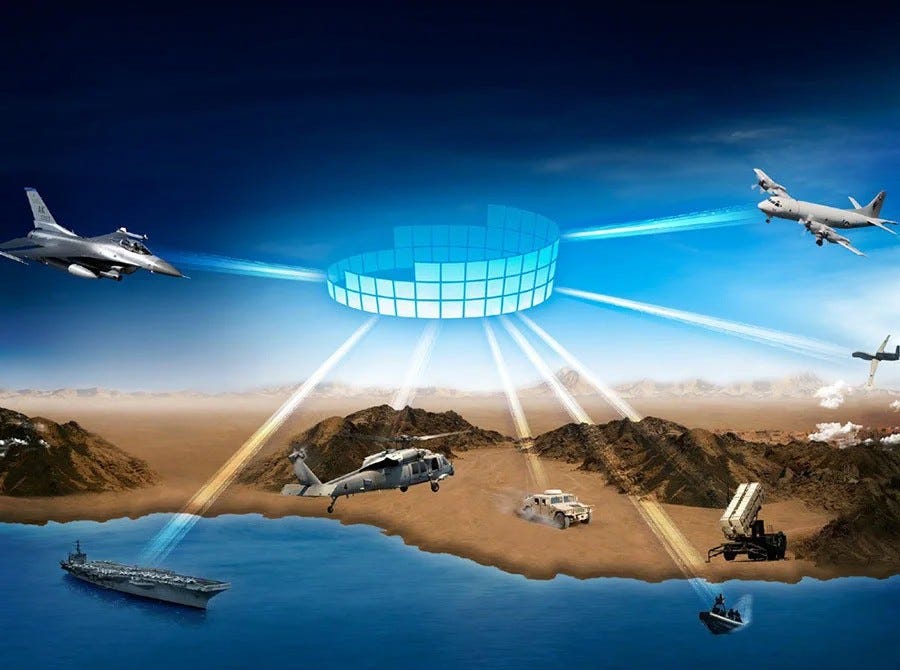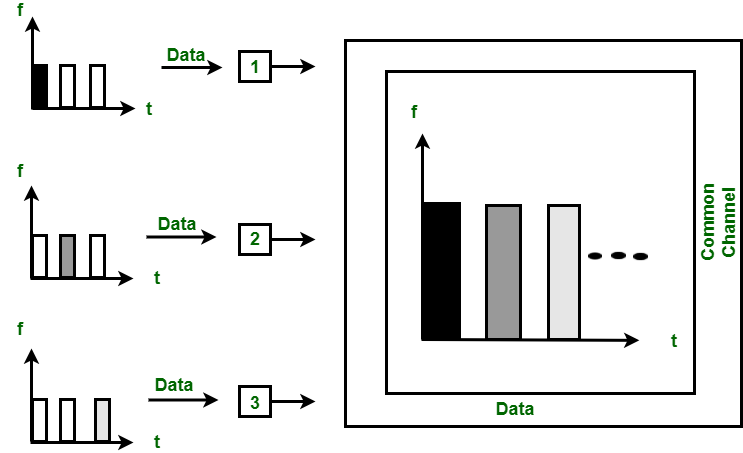Ukraine’s F-16s Just Got Wi-Fi: What Link-16 Really Means for the War
I often focus on the weapons: missiles, jets, and drones. But sometimes, the network connecting them is the real combat amplifier.

Forget cat videos. Ukraine’s new “military Wi-Fi” isn’t for streaming, it’s for surviving. With the integration of Link-16 into its air and missile defense architecture, Ukraine has quietly stepped into a new era of warfare. One where the fog of war gets a little less foggy and shoot-downs can happen before Russian aircraft even see who tagged them.
Let’s break down what Link-16 is, why NATO has been using it for decades, and how its arrival in Ukraine could shift the calculus from reactive defense to proactive domination.
What Is Link-16, and Why Should You Care?
Link-16 is not just a network software protocol, it’s the circulatory system of NATO's digital warfare. It's how the alliance shares blood-pressure-level data about the battlefield in real time. Developed during the Cold War and continuously refined ever since, Link-16 is the standard for tactical data exchange among NATO members and close partners.
The name may sound like something off a Net+ certification exam, but in practice, it’s the reason NATO airpower has been so lethal, coordinated, and survivable over the last two decades.

Unlike traditional comms that rely on voice or slow satellite relays, Link-16 sends bursts of encrypted data several times per second using line-of-sight UHF frequencies. We’re talking rapid updates about friendly unit locations, enemy sightings, weapons status, and even fuel levels; all shared simultaneously across a network of aircraft, ships, drones, and ground vehicles.
This is machine-speed warfare, where decisions don’t hinge on chatter, guesswork, or waiting on confirmation three links up the chain.
Importantly, it’s not just one-way traffic. Link-16 is what’s called a Time Division Multiple Access (TDMA) system. Every unit on the net is assigned precise time slots to broadcast, which keeps everyone synchronized and prevents information bottlenecks… crucial when dozens of platforms are talking at once in a dynamic battlespace. It also supports relay functions, so data can hop from unit to unit like digital leapfrog, extending situational awareness far beyond direct line-of-sight.
TDMA is a channel access protocol that slices up bandwidth like a Vegas buffet; each station gets its own time slot to gorge on data. In practice, that means the total bandwidth is divided up based on time. One station transmits, then the next, and so on, like a very polite queue of digital commuters who know exactly when it’s their turn to speak.
But it’s not just about timing, it’s about precision. Each station must know exactly when its time slot begins and where that slot fits in the overall scheme. Miss your window, and you're just shouting into the void. TDMA requires tight synchronization between stations, meaning your network better be keeping time like a Swiss watch. This protocol lives in the data link layer of the OSI model, where the data link layer tells each station, “Okay, champ, now’s your moment—go!”
So why use TDMA? For starters, it scales pretty well; transmission speeds can range from a humble 64 kbps all the way to a respectable 120 Mbps. Not too shabby for a system that’s been around since flip phones were cutting-edge. Because TDMA allocates time slots, users don’t interfere with each other. It’s orderly, like air traffic control but for bits.
It’s also incredibly versatile. Whether you're sending a fax like it’s 1997, shooting off an SMS, or sitting in on a pixelated video conference, TDMA’s got you. Multimedia applications? Covered. Voice and data? No problem. And here’s the kicker: since devices only transmit during their time slots, they save power the rest of the time. Translation: longer battery life, because nothing says “user satisfaction” like not needing to charge every few hours.
Now, it’s not all sunshine and throughput. As cell sizes shrink, TDMA demands a serious commitment to infrastructure, more base stations, more hardware, more support. So yeah, it’ll cost you. But for many networks, the benefits still outweigh the bill.
In short, TDMA is like the digital version of organized chaos, predictable, efficient, and surprisingly good at playing nice in crowded environments.
And no, it’s not Wi-Fi in the civilian sense; you can’t stream YouTube over it. But it is jam-resistant, encrypted, and hardened for exactly the kind of electronic warfare environment Ukraine now finds itself in. Think of Link-16 as a tactical whisper network where your entire air defense grid is in constant, encrypted conversation, whether it’s dodging cruise missiles or hunting them down.
For NATO, this is old news. For Ukraine, it’s the difference between knowing there’s a threat in the area and knowing exactly where that threat is, what direction it’s heading, and what asset is already moving to intercept.
Keep reading with a 7-day free trial
Subscribe to Eyes Only with Wes O'Donnell to keep reading this post and get 7 days of free access to the full post archives.



